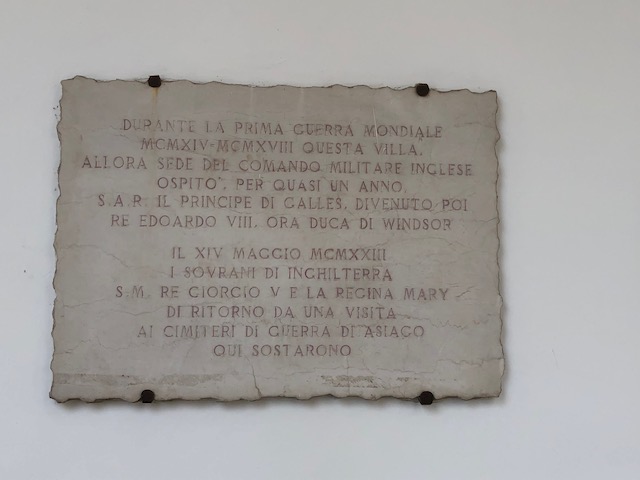First World War 1917-18
In Autumn 1917 three British divisions reinforced the Italian Army in their fight against the Austro-Hungarians.
At Kobarid in Slovenia (known as Caporetto by Italians) you see the battle unfold with the help of the diorama in the museum before witnessing Lieutenant Rommel’s early military promise on Monte Kolovrat. You then follow the chaotic Italian 10 day retreat across the River Tagliamento and appreciate why the Austro-Hungarian Army's momentum faded. You witness how the Italian Armies stabilised the front on the River Piave 50kms from Venice, before British and French forces arrive from France. On the Asiago Plateau you visit the Ossuary to see the terrain from the Austro-Hungarian perspective, before crossing to the British defensive position to tour the British frontline running through the pine forests. You hear stories of the extraordinary bravery as 23 and 48 Divisions repel the attacks, and visit the remains of Field Hospital at Barenthal. At Vittorio Veneto you walk the ground of 2nd Honourable Artillery Company’s extremely challenging preliminary operation to capture Papadopoli Island. You follow the successful assault by 7 Division and visit the Commonwealth War Graves Cemetery at Tezze. You hear how the rapid collapse of the broken Austro-Hungarian Army leads to the end of the war on the Italian Front.

‘Here growes the wine Pucinum, now called Prosecho, much celebrated by Pliny’, wrote the Elizabethan explorer, Fynes Moryson about the Italian sparkler that has conquered the world. Prosecco, born in the beautiful hills around Cornigliano that were fought over by the Allies and Austro-Hungarians, did not appear on a wine label until just after the First World War. To the east, the vineyards of Friuli are famed for some of Italy’s finest whites from an assortment of grapes including sauvignon, pinot bianco and friulano, and the wines become increasingly aromatic towards the Slovenian border. Meanwhile Bordeaux’s red grapes have been here since Napoleon, alongside local stars like refosco and schiopettino. We will taste these and some of the so-called orange wines made in amphorae.
Battlefield Blogs

2Lt Youll VC
I first saw the grave of 2Lt John Scott Youll VC a few years ago when I was visiting the Giavera Commonwealth War Graves Cemetery. The cemetery lies in a quiet, sheltered spot behind the Italian Ossuary at Montello, some 50kms north of Venice. In researching his story, I discovered Jack Youll was born in 1897, became a colliery electrician at Thornley in County Durham before volunteering to join the Royal Engineers in time for the Battle of the Somme in 1916. He was recommended for a commission and served in the11th Battalion Northumberland Fusiliers in the 23rd Division, firstly in France, before moving to Italy as part of the British and French reinforcements that were rushed to the front with the Austro-Hungarian Army following the Battle of Caporetto in November 1917. Slightly more than 600 VCs were awarded during theFirst World War, but only 6 in the Italian Campaign and so discovering the action that led to him receiving the VC was relatively straight forward.
Read the full blogOther Tours you might like to consider...



















